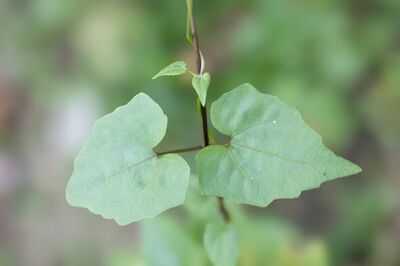
If you're an avid gardener, you'll understand the importance of vigilance against weeds and pests. One particular type that may seem innocuous is bindweed, technically a wildflower, but they can spell trouble. These wildflowers possess extensive roots and can effectively "strangle" other plants in your garden, ultimately leading to their demise.
Given the depth of their roots, eradication proves challenging, and even if successful, they can regrow. Simon Akeroyd began a social media by saying spotting bindweed in your garden can be a "nightmare". However, he suggested a method to ensure they're gone for good.
Bindweed competes with other plants for water and light - and their deep roots provide them a significant advantage.
He cautioned that it will "spread rapidly" if not managed, so it's important to act fast. Here's what you should do upon encountering any bindweed in your garden.
How to remove bindweedOne of the most concerning aspects of bindweed is how quickly it grows, so it's vital to remove it if you don't want it in your garden.
The initial step involves uprooting the weeds, ensuring the entire root is extracted. Simon elaborated: "Every last bit of the root needs to be removed from the soil."
However, once you've removed it, never place it directly into your compost heap. Even when they have been uprooted, bindweed roots can still sprout from the compost and overrun your garden.
Instead, spread a large piece of chicken wire over your compost and position the fresh bindweed roots on top of it. If you allow them to dry out for several weeks, they'll perish and be unable to grow any further.
This single task - placing the bindweed on chicken wire (rather than on top of a compost pile) - can ensure the weed doesn't make a comeback.
Only when the bindweed has completely dried out should you add it to your compost, as this means there is no longer any risk of it potentially regrowing.
He also cautioned against binning bindweed, explaining: "And it's not good for the landfill. But you can dry out the roots in the sun for a few weeks until the bindweed roots have completely dessicated and then add it back to the compost.
"Bindweed root shouldn't regrow if it has been dried out completely. I've built myself a drying rack for this purpose, which I also use for drying my onions."
You may also like

Flying into the US? You will be photographed and entered into a facial recognition database

'No king, no god': Young artist Earth to Eve aims at Donald Trump with a razor-sharp anthem

Bengal: Trinamool leader's son held in Rs 350 crore chit fund scam remanded to 10-day police custody

Russia tests dangerous cruise missile amid Ukraine war, impossible to stop this 'storm bird'

PVL 2025: Bengaluru Torpedoes become champions of season 4 with dominant win over Mumbai Meteors






